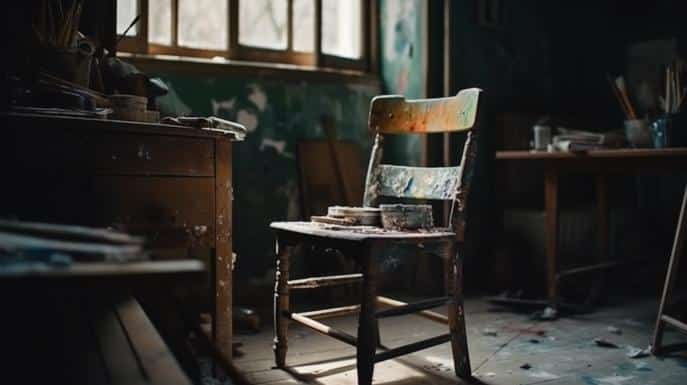In every corner of our home, there are stories hidden in forgotten objects. “Upcycling: Transform with Innovation” reveals a universe where the old reaches new horizons of usefulness and beauty. Together, we will embark on a journey of reconnection and reinvention, where DIY upcycling becomes a bridge between the past we were and the sustainable future we wish to create. Discover how to get started in this transformative art, applying upcycling techniques that spring from the simplicity of our own home, waiting for our touch of creativity to blossom into new treasures.
How to start upcycling and transform old items into new treasures?
What are the first steps for those who want to start practicing upcycling? Start by observing which no longer used items around you could be transformed. How to identify items at home that can be transformed through upcycling? Discarded or unused items, which with creativity gain a new function, are perfect. What basic upcycling techniques can be applied without prior experience? Techniques such as painting, gluing and small repairs can be performed by beginners in do it yourself upcycling, with basic tools and recyclable materials.
What materials and tools are essential for upcycling projects?
Materials commonly used in upcycling include fabrics, wood, glass and metals, many of which can be found around the home or purchased from second-hand stores. For beginners, basic tools like scissors, glue, hammer and screwdrivers are essential. However, creativity can often replace specialized tools, providing innovative solutions with available resources. Art with recycled materials is an example of where this innovation shines, transforming discarded items into new creations that promote sustainability.
Understand that upcycling enhances sustainability by repurposing discarded materials into higher quality products. This practice, accentuated by creativity workshop, stands out from traditional recycling, emphasizing quality preservation and extending the useful life of materials. With effective upcycling tips, beginners can start small projects and contribute to environmental conservation.
Where to find inspiration to create innovative upcycling projects?
How to find inspiring ideas for upcycling? Exploring online platforms and social networks is a great start. Platforms like Pinterest and Instagram are full of innovative examples of [upcycling trends](https://www.pinterest.com/search/pins/?q=upcycling ideas&rs=typed&term_meta[]=upcycling|typed&term_meta[]=ideas|typed), since upcycling decoration even fashion. Participating in workshops is also beneficial, expanding creativity and technique. Inspiring projects can be seen from everything from interior design to sustainable fashion catwalks, offering insight into the potential of innovative reuse.
What is the environmental and economic impact of practicing upcycling?
Upcycling reduces waste and conserves natural resources, positively impacting the environment. Economically, it drives the development of the circular economy, creating new market opportunities and valuing eco-friendly products. To calculate the savings when choosing upcycling over new products, take into account the lower cost of reused materials and the added value to the final product.
In this article, we explore the first steps to getting started in the world of upcycling and how to identify items that can blossom into a new life. We discuss techniques accessible to beginners, essential tools and materials, and how creativity overcomes resource barriers. Furthermore, we delve into the inexhaustible sources of inspiration for innovative projects and contemplate the positive impact of upcycling on the environment and the economy. Each upcycling action is a step towards a more sustainable future – a cycle of transformation in which we can all participate, saving resources and encouraging creativity in a world that calls for conscious solutions.
FAQ
What is the starting point for someone who wants to start upcycling?
To get started with upcycling, start by identifying items that you no longer use and that can be creatively transformed into new objects of use.Which items are ideal for being transformed through upcycling?
Ideal items for upcycling are discarded or unused items that, with creativity, can acquire a new function or purpose.What basic techniques can be used by beginners in upcycling projects?
For beginners, accessible upcycling techniques include painting, gluing and small repairs, which can be carried out with basic tools and recyclable materials.
What tools are needed to start an upcycling project?
Basic tools like scissors, glue, hammer, and screwdrivers are essential for getting started in upcycling and can be sufficient for several initial projects.Where can I find inspiration for upcycling projects?
Find inspiration for upcycling projects on online platforms like Pinterest and Instagram, which offer a rich variety of examples in decor, fashion and other innovative upcycling trends.



